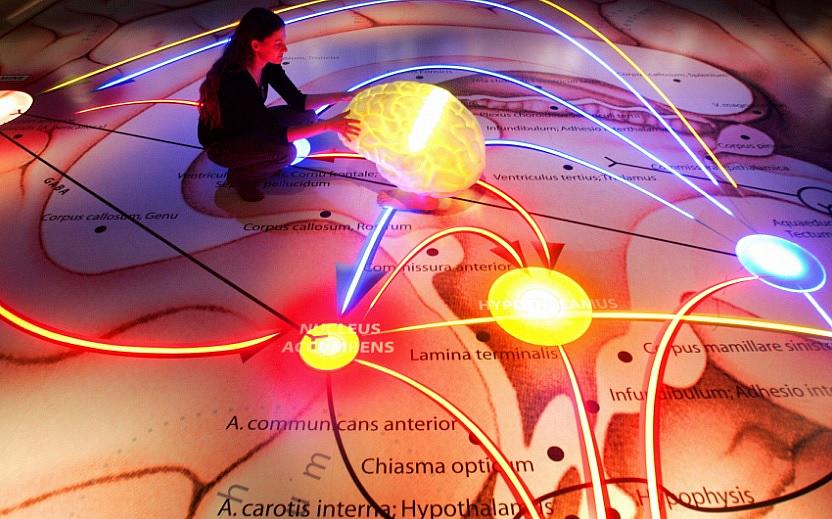Mental Mapping: Research reveals clues to teenage brain dysfunction

Photo: Norbert Millauer/Getty Images
Parents often make jokes about teenagers having their own special brain wiring. It’s a cliché that has a biological underpinning, according to research coming out of new efforts to map the human brain.
“Adolescence is a period where people are very likely to have their first episode of depression or anxiety or psychosis,” Kirstie Whitaker, a postdoctoral research fellow at the University of Cambridge’s Brain Mapping Unit, said in a video about the Allen Brain Atlas. “Why then? And is there a way that we could tell that someone was at risk of developing those disorders.”
So what did she and her colleagues do?
Whitaker and other researchers at the University of Cambridge and University College London took magnetic resonance imaging (MRI) scans from 300 people ages 14 to 24. They examined them to identify how the brains of teens change structurally as they grow. They were looking for signals of emerging disorders, like anxiety, depression, and schizophrenia.
They saw two important things happening. First, the cerebral cortex – the outermost layer of the brain — started to shrink and become thinner as the kids got older. This confirmed and provided some precision to what had been seen in earlier studies. They found that at age 14, the cortex in the adolescents being studied ranged from 1.93 mm in thickness to 3.8 mm across different areas. Over time, though, that cortex shrank at a rate of about 0.011 mm per year through age 24.
That shrinking appears to be how the brain improves its efficiency. After interviewing Whitaker, Andy Coghlan at the New Scientist used a great term to describe what was going on: editing. He wrote:
The editing process that takes place in teen years seems to select the brain’s best connections and networks, says Kirstie Whitaker at the University of Cambridge. ‘The result is a brain that’s sleeker and more efficient.’
The second trend Whitaker and her colleagues saw was even more important when coupled with the first. While the cortex — or gray matter — was shrinking, the myelin sheaths that cover the nerve fibers inside the cortex became thicker.
Why does this matter? One reason is because researchers thought before that myelin was largely found in what is loosely referred to as the brain’s “white matter.” This is the part of the brain thought of as the main hub linking different regions. The Cambridge and London researchers discovered nerve fibers in the cortex — or gray matter — being covered in myelin, too, a process known as “myelination.”
The other reason this matters is that myelin helps the nerve fibers work more quickly, meaning that the brain is transforming itself into a faster machine in adolescence.
“It may be that pruning and myelination are part of the maturation of the brain,” Steven McCarroll at Harvard Medical School told Coghlan. “Pruning involves removing the connections that are not used, and myelination takes the ones that are left and makes them faster.”
That alone would be interesting, but the researchers went deeper. They linked their MRI measurements of cortical thickness and myelin thickness to the gene expression information found in the Allen Brain Atlas.
A pattern revealed itself: the same areas of the brain that saw the biggest changes in cortical thickness and myelin thickness were also those areas that had strong gene expression related to schizophrenia.
Ed Bullmore, head of Cambridge’s psychiatry department, told Victoria Woollaston in Wired magazine to think of the brain as an international air traffic network, with the development of the cortex and myelin-wrapped nerves as important to traffic flow as are smoothly functioning air traffic control and runway systems. If genetic disorders are distorting the way major hubs of mental activity inside the cortex are developed, they could be causing schizophrenia and other problems. The planes full of ideas that help lead people toward healthy, happy lives arrive late or maybe even crash and cause other disruptions.
“Adolescence can be a difficult transitional period, and it’s when we typically see the first signs of mental health disorders such as schizophrenia and depression,” Bullmore said in Cambridge’s announcement of the study. “This study gives us a clue why this is the case: It’s during these teenage years that those brain regions that have the strongest link to the schizophrenia risk genes are developing most rapidly.”
The study’s findings were published in August 2016 in the Proceedings of the National Academy of Sciences.
“We’re not going to get rid of mental health disorders,” Whitaker said. “We’re not going to get rid of the feelings that people have, but we might be able to support them better and minimize their suffering.”
**
Related posts
Mental mapping: Deep brain science points to better mental health
Mental Mapping: Research reveals simplicity of brain patterns

